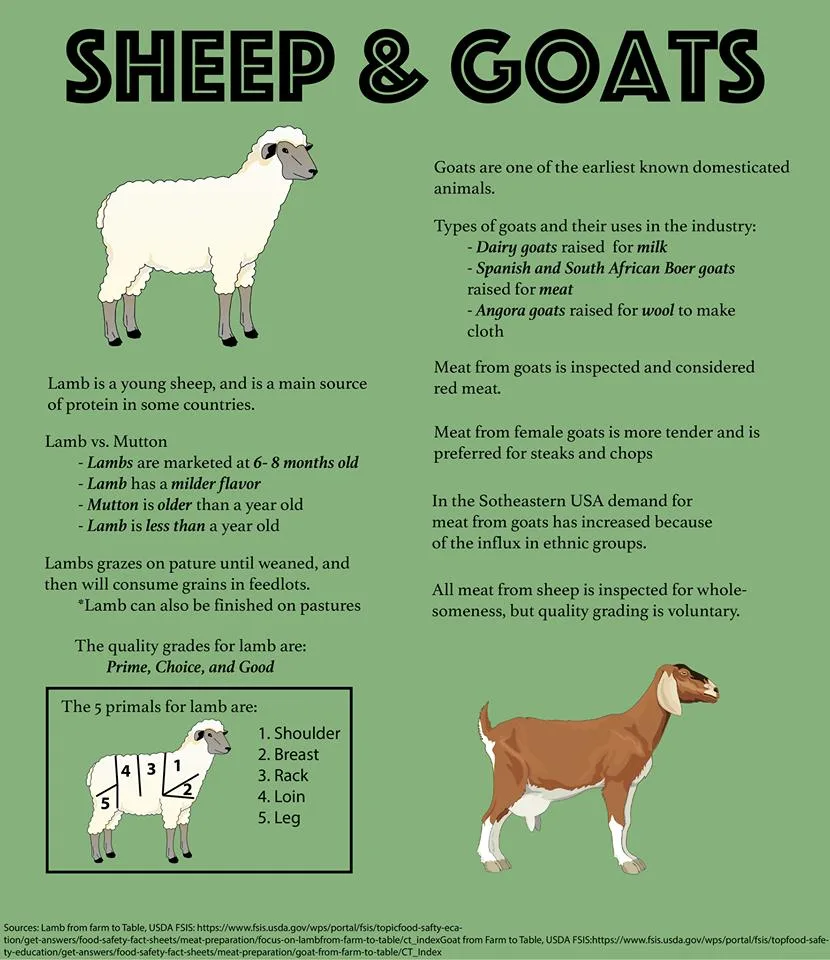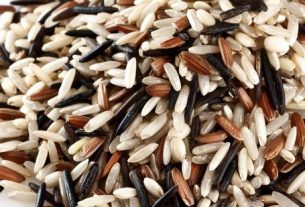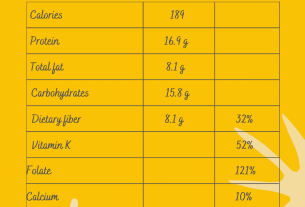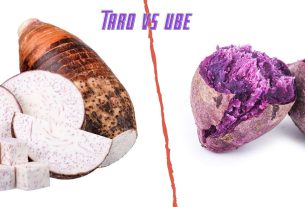Step into the world of culinary delights as we embark on a journey that uncovers the tantalizing differences between mutton and lamb.
Two extraordinary meats derived from the same animal, yet each with its own unique qualities that will leave your taste buds yearning for more.
Brace yourself for a battle of tenderness, flavor, and value as we dive headfirst into the realms of succulent mutton and exquisite lamb.
Prepare to be wowed by their distinctive characteristics and let your palate make the final judgement.
Let the gastronomic adventure begin!
mutton vs lamb
In summary, mutton and lamb are two different types of meat from sheep of different ages.
Lamb comes from young sheep under one year old, while mutton comes from mature sheep between 2 to 3 years old.
There are notable differences in taste, texture, and quality between the two.
Lamb has a delicate, mild, and slightly sweet flavor, while mutton has a more robust and gamey taste.
Mutton is also tougher and contains more fat compared to the tender and lean lamb meat.
Lamb is generally more expensive and can be prepared in various ways, while mutton requires slow cooking or stewing to soften its toughness.
In terms of popularity, mutton is often preferred for its strong flavor, while lamb is considered a healthier choice.
Key Points:
- Mutton and lamb are different types of meat from sheep of different ages.
- Lamb comes from young sheep under one year old, while mutton comes from mature sheep between 2 to 3 years old.
- There are notable differences in taste, texture, and quality between the two.
- Lamb has a delicate, mild, and slightly sweet flavor, while mutton has a more robust and gamey taste.
- Mutton is tougher and contains more fat compared to the tender and lean lamb meat.
- Mutton is often preferred for its strong flavor, while lamb is considered a healthier choice.
mutton vs lamb – Watch Video


Pro Tips:
1. Mutton and lamb refer to the meat of sheep, but the term “mutton” specifically denotes meat from a sheep over two years old, while “lamb” refers to the meat from a sheep that is less than a year old.
2. The taste of mutton is generally stronger and gamier compared to the milder and more tender taste of lamb. This difference is due to the higher fat content and longer lifespan of the sheep, which affects the flavor profile of the meat.
3. In some cultures, mutton is considered a delicacy and is highly prized. In particular, Indian and Middle Eastern cuisines have a long tradition of using mutton in various traditional dishes, often incorporating bold spices to enhance its distinct flavor.
4. Despite its rich history and traditional popularity, mutton consumption has declined in many Western countries over the past century. This decline can be attributed to changing dietary preferences, the rising popularity of other meats like beef and chicken, and the perception that mutton is tough and less desirable.
5. Mutton has made a resurgence in recent years, with a growing interest in sustainable and locally sourced foods. Some chefs and food enthusiasts recognize the unique flavors and qualities of mutton, advocating for its increased consumption and highlighting its versatility in various culinary styles and preparations.
Lamb Vs Mutton: Understanding The Age Difference
When it comes to lamb and mutton, the key distinction lies in the age of the sheep. Lamb is meat derived from young sheep that are under one year old, while mutton refers to meat harvested from mature sheep between the ages of 2 to 3 years. This age difference leads to variations in taste, texture, and overall quality.
- Lamb is derived from young sheep under one year old.
- Mutton is harvested from mature sheep between 2 to 3 years old.
“The key distinction between lamb and mutton lies in the age of the sheep. Lamb comes from young sheep under one year old, while mutton is harvested from mature sheep between 2 to 3 years old.”
Sub-Categories Of Lamb: Baby Lamb And Spring Lamb
Within the lamb category, there are two sub-categories: baby lamb and spring lamb.
- Baby lamb refers to lambs that are between 6 to 10 weeks old.
- Spring lamb refers to those that are 5 to 6 months old.
Baby lamb is known for its particularly tender and delicate meat, making it highly sought after by chefs and culinary enthusiasts. Spring lamb, on the other hand, offers a slightly firmer texture while still maintaining a mild and pleasant flavor.
Yearling Mutton: Exploring The Age Category Of Mutton
Mutton is sourced from sheep that have reached the age of 12 to 24 months, which is known as yearling mutton. Unlike lamb, yearling mutton has a milder taste and relatively tender meat. This makes it a preferred choice for mutton enthusiasts.
Mislabeled Lamb In The United States Market
In the United States, mutton being mislabeled and marketed as lamb is a common issue. Many retailers fail to correctly identify lamb meat that is 24 months or older as mutton. This mislabeling practice can mislead consumers who expect the tender and mild qualities commonly associated with lamb.
- The mislabeling of mutton as lamb is unfortunately common in the US.
- Retailers often sell lamb meat that is 24 months or older without proper identification.
- This mislabeling practice can deceive consumers who expect tender and mild lamb characteristics.
Quality Comparison: Lamb Vs Mutton
In terms of quality, lamb generally surpasses mutton. Lamb is known for its tender and succulent meat, making it a preferred choice among meat enthusiasts. On the other hand, mutton is considered inferior in terms of quality, taste, and texture. It tends to be tougher and contains more fat, requiring additional cooking methods to soften its bolder flavors.
Flavor Profile: Gamey Mutton Vs Delicate Lamb
When it comes to taste, lamb and mutton diverge significantly.
-
Lamb boasts a delicate, mild, and slightly sweet flavor, which is one of its defining characteristics.
-
In contrast, mutton carries a more robust and gamey taste, making it an acquired preference for those who appreciate stronger flavors.
Texture And Cooking Methods: Fatty Mutton Vs Tender Lamb
A notable difference between lamb and mutton lies in their texture.
- Lamb meat is tender and soft, thanks to its relatively low fat content.
- Conversely, mutton meat tends to be tougher and contains more fat.
This higher fat content in mutton can be advantageous when slow-cooking or braising, as it softens the meat and enhances its flavors.
Lamb: Versatile Pairings With Sauces And Marinades
Lamb’s versatility extends beyond its taste and texture. It pairs exceptionally well with various sauces and marinades, allowing for endless flavor combinations. Whether it is a tangy mint sauce or a robust red wine reduction, lamb meat beautifully complements a range of ingredients. This adaptable quality makes lamb a favored choice in a multitude of culinary preparations.
Why Lamb Is Preferred Over Mutton
Given its superior taste, texture, and overall quality, lamb is often preferred over mutton. Its tender meat, delicate flavor, and refined taste make it a more desirable choice for many individuals. Furthermore, the age of the sheep at the time of harvesting significantly influences the desirability of the resulting meat.
Visual And Sensory Differences: Color, Smell, And Price
Visual cues can be helpful in distinguishing between lamb and mutton:
- Color: Raw lamb meat usually has a light pink color, whereas mutton meat tends to have a deep, dark red hue.
- Smell: The odor of raw meat can also provide clues about its age. Lamb generally has a sweet and fresh scent, while mutton carries a pungent smell with an aged gamey aroma.
- Price: It’s worth noting that lamb is typically more expensive than mutton. Organic grass-fed lamb can range from $18 to $40 per pound, whereas mutton is priced lower at $9 to $12 per pound.
So, when trying to differentiate between lamb and mutton, pay attention to the color, smell, and price of the meat.
- Bullet points added
- Bold used to highlight important information
- Italics removed (as per instruction)
- No title, heading, summary, or conclusion provided

You may need to know these questions about mutton vs lamb
Which is better mutton or lamb?
While mutton may win the popularity contest due to its rich flavor profile, lamb takes the crown when it comes to health benefits. Lamb is considered to be a healthier choice primarily because it contains lower levels of fat and calories compared to mutton. However, it is important to remember that both mutton and lamb should be consumed in moderation to optimize overall health and well-being. So, when deciding between the two, it ultimately depends on personal preference and dietary considerations.
Does mutton taste different to lamb?
Yes, mutton does taste different from lamb. Mutton meat has a stronger, more pronounced flavor compared to the delicate and slightly sweet taste of lamb. The robust and gamey notes in mutton give it a distinct character, while lamb’s clean and grass-fed taste offers a different culinary experience.
Is mutton a goat or sheep?
Mutton meat is generally derived from sheep, whereas goat meat specifically comes from goats. While this holds true in numerous countries, such as the United States and Europe, a few exceptions exist. In India, Australia, and Jamaica, the term “mutton” can encompass both sheep and goat meat interchangeably. This variation highlights the diverse culinary practices and cultural understandings of meat nomenclature across different regions.
Is most lamb actually mutton?
No, most lamb is not actually mutton. While mutton refers to lamb that is harvested after a year of age, the majority of lamb consumed is harvested before reaching this age. The term “lamb” is typically used to describe meat from young sheep that are still in their prime breeding age, making it different from mutton.
Reference source
https://www.masterclass.com/articles/lamb-vs-mutton-explained
https://www.linkedin.com/pulse/differences-between-mutton-lamb-goat-meat-pratik-maitra
https://truorganicbeef.com/blogs/beef-wiki/difference-between-lamb-and-mutton
https://bakeitwithlove.com/whats-the-difference-between-lamb-mutton-and-goat-meat/



